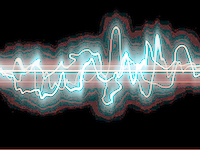
PHONONIC SOUND TECHNOLOGY
Phononic crystals are periodic composite materials made from constituents with different densities and acoustic wave velocities These synthetic materials, which are analogous to photonic crystals for electromagnetic wave, are of growing interest because they can change the way in which sound or ultrasound travels through matter, leading to a number of novel applications Phononic crystals may be constructed by arranging identical objects (for example rods in two dimensions (2D) or spheres in three dimensions (3D) in a regular periodic array or crystal lattice, and embedding these elementary units in a host material or matrix The key feature of phononic crystals is their periodicity, which causes the propagation of acoustic or elastic waves to be dramatically modified when lenght scale of the periodicity is comparable with the wavelenght of the sound (oe ultrasound) The origin of these effects is the interference of waves scattered from the periodically arranged contituents The overall size of phononic crystals may wary from several meters down to several micrometers, depenting on the size of elementary units (such as the diameter of a sphere or a rod), the lattice constants (the shortest distances over which the structure repeats), and the number of layers The condition that these characteristic lengths be comparable to the wavelenght dictates the operational frequency range of the phononic crystal, which can thus be tuned from hundreds of hertz to gigahertz
OPTOPHONONIC SOUND TECHNOLOGY
(materials in preparation - admin)
